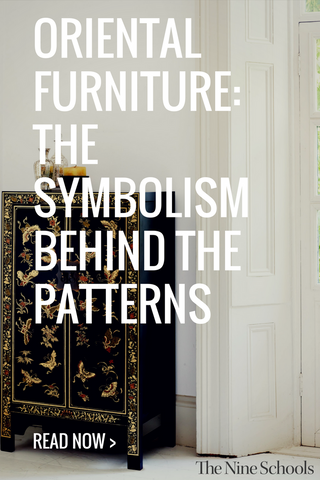Today, oriental furniture is prized for its beautiful, aesthetic appearance that gives any room an air of sophistication from far-away lands. However, many people don’t realise that these designs that give Chinese furniture its characteristic look have deeper cultural significance through symbolism.
Here's a quick guide to what some of the more common symbols represent:

Dragons
Dragons are instantly recognised as a symbol of China, playing an important role in the country’s mythology and folklore. They are not only an imperial symbol of authority, but also represent power, most notably in the form of controlling water, storms, and floods. In the past, Chinese emperors were thought of as sons of dragons and therefore ordinary citizens could not use the dragon symbol themselves. The dragon’s powerful presence is also thought to bring good luck and strength to those who are worthy of receiving it.
Butterfly
As a creature renowned for its beauty across cultures, the butterfly represents love for the young-at-heart and a prospering social life. In Chinese legends the butterfly has symbolised an unbreakable romantic bond, making it the ideal design to have in a newly married couple’s home. Feng shui opens a door of even more possibilities for the butterfly, showing that it can also represent freedom, creativity, and transformation, making it a great choice for any home.
Lotus
The lotus flower is another significant symbol of Chinese culture and one that may be recognised but not fully understood. The lotus is a symbol of purity, as it grows out of the mud to float on the water when it blooms. It is also linked closely to Buddhism, thought to represent the throne or holy seat of Buddha and therefore associated with enlightenment and peace.
Natural landscapes
Some oriental furniture pieces go as far as having detailed natural scenes painted or carved onto their surfaces, but again this is not just an artistic depiction of the countryside. Landscapes in Chinese culture expressed the artist’s internal state of being and not just their external surroundings. Even now connections between humans and nature are valued and thought of as essential to ensure mental well-being and growth.
By gaining insight into Chinese symbolism you can discover a revitalised perspective on oriental furniture, viewing a room not just as decorative, but laden with cultural and historical significance. Take this as an opportunity to research some of the images on your own tables and cabinets, and ignite a newfound appreciation for oriental interior design.

